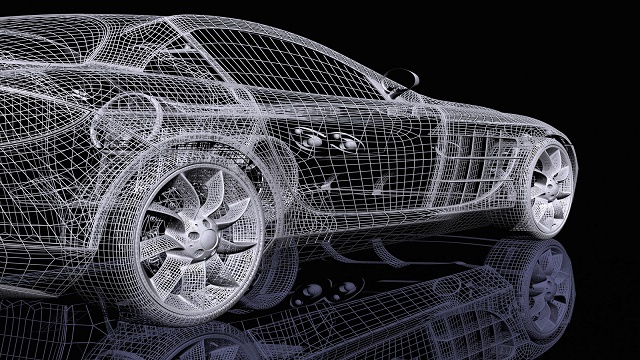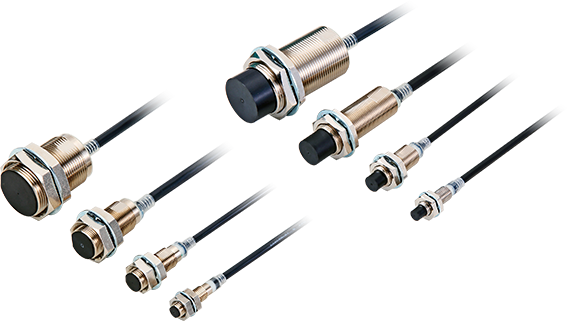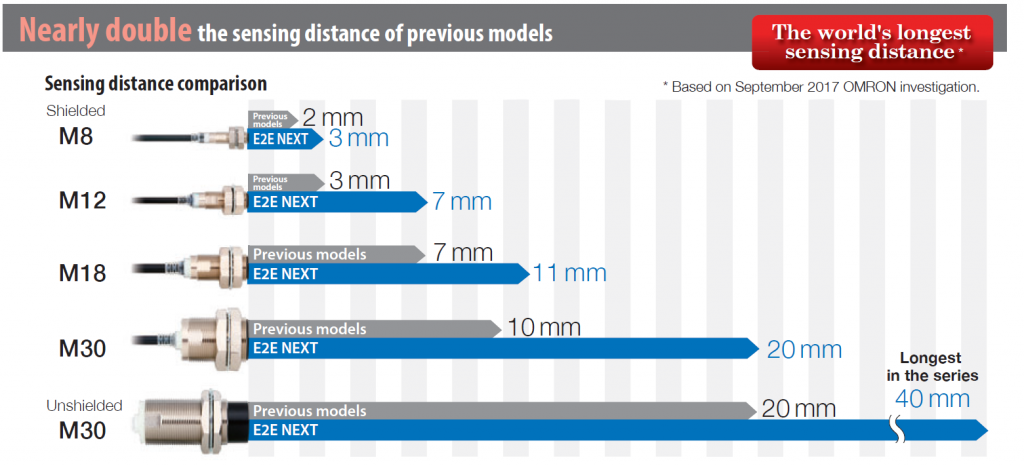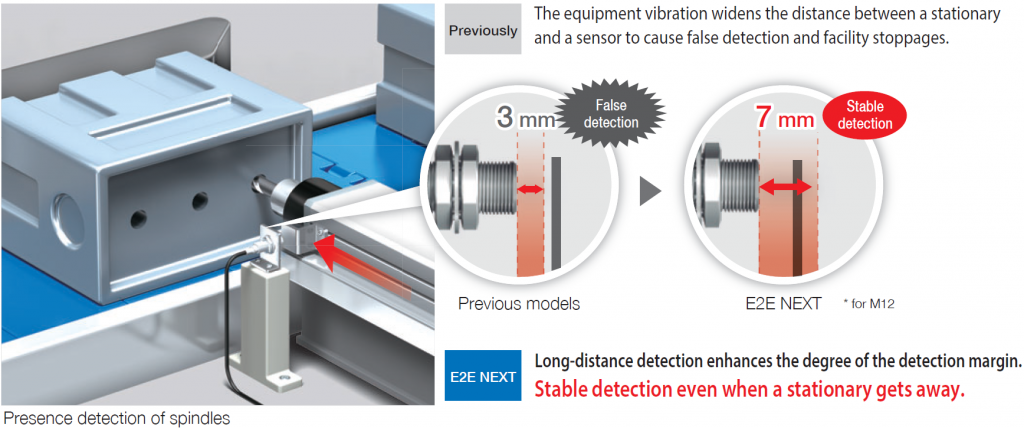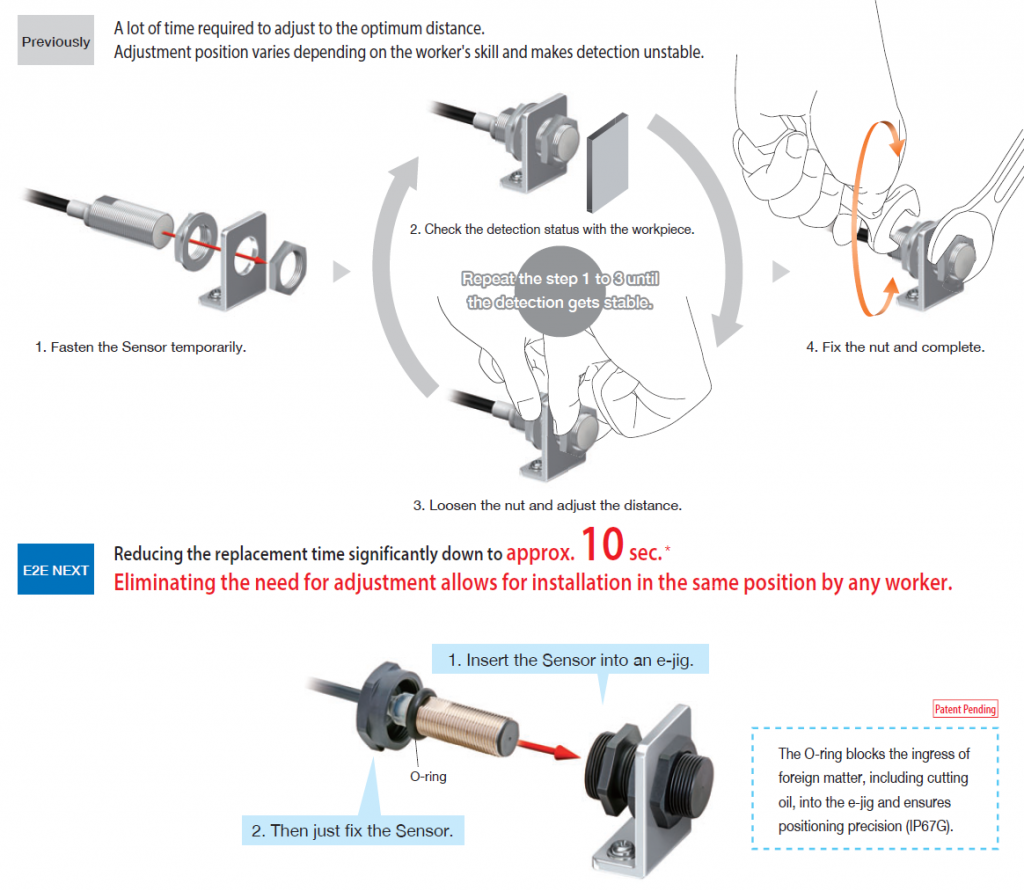OMRON Corporatio has recently introduced E2E-NEXT Next-generation Proximity Sensors which enable the world’s longest sensing distance and “e-jig” Mounting Sleeves for further enhancement of facility operation rate at automobile and automobile parts factories.
The newly released E2E-NEXT has nearly double the sensing distance of Omron’s previous models, thus reducing the occurrence of facility stoppages due to malfunctions and failures caused by collisions with sensing objects down to one-third at automobile and automobile parts factories. Also, “e-jig” sharply reduces the time required to replace a proximity sensor after failures: from approximately ten minutes to 10 seconds. The recovery time is an average of approximately 60 minutes after facility stoppages because of a series of works such as checking failure parts, dismantling equipment partially, in addition to replacing, wiring, and checking operation of the sensors. With “e-jig”, one can reduce this down to approximately 50 minutes.
Through the introduction of these users can reduce the unexpected facility stoppages by approximately 173 hours, which is nearly 10% of the unexpected stoppages per year (approximately 1,600 hours). It will also help reduce 240 hours of unexpected facility stoppages a year due to proximity sensors down to approximately 67 hours.
Automobile and automobile parts factories are assumed to lose 10 to 60 million yen if facilities stop for an hour. It is a major managerial issue to reduce the frequency and time of facility stoppages. Omron conducted a survey at manufacturing sites of engine parts before E2E-NEXT development. The result shows that unexpected facility stoppages totalled approximately 1,600 hours, 240 hours of which (15%) were caused by malfunctions and collisions between proximity sensors and sensing objects. Increasing the sensing distance of proximity sensors enables to reduce malfunctions and collisions caused by wear and vibrations due to facility’s aged deterioration. It was difficult with the existing technology, however, because the changes in ambient temperature greatly affect the stability of detection.
OMRON has also independently developed “Thermal Distance Control” technology and “Analog Digital Hybrid IC” that enables temperature compensation. These were used for E2E-NEXT to minimize the effect due to temperature changes and achieve stable long sensing distance.
OMRON will continue to work for the innovation of manufacturing to achieve long and stable facility operation by working on various problems at manufacturing sites.
Main features
Nearly double the sensing distance of previous models
Less facility stoppage risk with longer sensing distance
Technology that supports long sensing distance
“Thermal Distance Control” Technology and Analog Digital Hybrid IC “PROX2”. “Thermal Distance Control” with “PROX2” writes temperature correction values externally when shipped and minimize the sensing distance changes due to temperature changes, which could not be done by the conventional analog IC. It is industry’s first for 2-wire proximity sensors to use analog digital hybrid IC “PROX2”.
Shorter time to replace a sensor reduces the time required to recover
For more information visit :www.omron-ap.co.in


